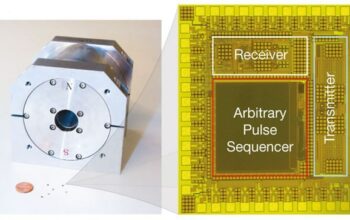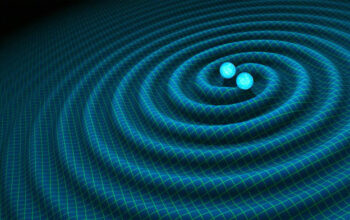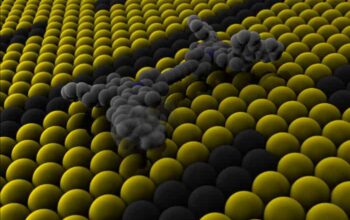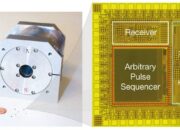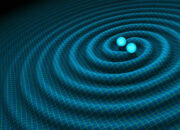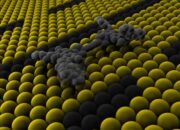The intersection of quantum mechanics and photographic technology has garnered substantial intrigue within both scientific and public discourse. As researchers unveil innovations like the Quantum Entanglement Camera, the implications of their findings extend beyond mere technological advancement. This captivating phenomenon not only showcases the cutting-edge capabilities of quantum physics but also stimulates profound questions about the nature of reality itself. One of the more compelling aspects of this convergence lies in the paradoxes of entanglement, wherein particles appear to interconnect across vast distances, challenging classical intuitions surrounding locality and determinism.
The fundamental principle of quantum entanglement posits that two or more particles can become intertwined in such a manner that the state of one particle instantaneously influences the state of another, regardless of the spatial separation between them. This striking characteristic provides fertile ground for the development of novel imaging modalities. By harnessing the quantum properties of light, the Quantum Entanglement Camera exemplifies how scientific inquiry often leads to a deeper understanding of both the micro and macro cosmos.
In recent experimental endeavors, scientists have successfully leveraged quantum entanglement to capture imagery at unprecedented levels of detail. This innovative technology allows photons, which interact with matter in intricate ways, to create images with unparalleled resolution and sensitivity. A landmark achievement of this endeavor was the imaging of a cat etched on a silicon substrate, revealing layers of complexity that classical imaging techniques cannot achieve.
The camera employs entangled photon pairs, where one photon is used to illuminate an object while its twin is detected, resulting in a composite image that encapsulates the full essence of the object in question. This methodology signifies not just a technological breakthrough, but an absolute recalibration of our understanding of visual perception. It invites contemplation of the duality of light, which serves as both a particle and a wave, and thus blurs the boundaries between observer and observed.
This phenomenon informs a more expansive inquiry into the nature of existence. As entities engage with this quantized realm, the philosophical implications become apparent. The original image captured by the quantum camera—a seemingly innocuous representation of a cat—transcends mere aesthetics; it embodies a confluence of science and art, the empirical and the experiential. The emotional resonance accompanying such insights further fuels the fascination with quantum technologies.
Moreover, the discussion surrounding quantum entanglement inevitably turns toward the implications of observation itself. In traditional optics, the act of observation is passive; however, in the quantum domain, the observer plays an active role that influences the outcome. This dynamic introduces a plethora of philosophical inquiries regarding the nature of reality: Does the act of measurement impose a form of reality upon a system that exists in a superposition of states? Such questions drive a wedge into classical determinism, inviting realms of interpretation that probe into the very fabric of existence.
The fascination with quantum technologies capitalizes on humanity’s inherent curiosity about the unknown. This allure drives not only academic discussion but also public engagement, with spectacles of quantum imaging attracting attention from diverse audiences. As visual representation becomes increasingly intertwined with quantum phenomena, the potential to engage the public with complex scientific concepts via visually compelling narratives becomes evident. The Quantum Entanglement Camera’s ability to present quantum realities helps demystify elusive concepts and fosters a broader appreciation for the intricacies of our universe.
Furthermore, the canvas of possibilities extends beyond aesthetic representation. The implications of capturing intricate images at the quantum level are vast and multifaceted. Applications in fields such as biomedical imaging, secure communications, and data encryption illustrate the potential of entangled photon technologies to transcend mere novelty. These advancements parallel those brought forth by the age of classical photography; just as photography transformed our perceptions, quantum imaging stands poised to revolutionize the information landscape through its unique advantages in state retrieval and resolution fidelity.
Nevertheless, challenges remain on the horizon for the applicability of quantum imaging technologies. The inherent delicacy of entangled photons requires environments meticulously controlled to prevent decoherence, a process that can corrupt the delicate states necessary for capturing images with fidelity. Innovating methodologies to address these turbulence factors is crucial for future implementations within real-world scenarios. As research expeditions continue to unlock the enigmas of quantum mechanics, the technologies developed may yet find applications unforeseen at this juncture.
Ultimately, the Quantum Entanglement Camera not only advances the state of imaging technology but serves as a lens through which audiences can fathom the fascinating complexities of quantum mechanics. The relationship between light, observation, and reality established by these developments invites deeper contemplation about the fabric of existence. As this technology progresses into the mainstream, it will undoubtedly enmesh itself within our cultural psyche, further transforming our understanding of both the microcosmic phenomena that underpin our universe and the macroscopic worlds they engender.
Consequently, the enduring fascination with quantum entanglement is twofold: it inspires awe due to its inherent complexity, and it cultivates a birthing ground for innovative technologies poised to reshape our understanding of reality. Thus, the field stands at a crossroads where artistic expression and scientific inquiry coalesce, offering vast potential for the narrative of discovery to evolve in concordance with the increasingly intricate tapestry of the universe we inhabit.

